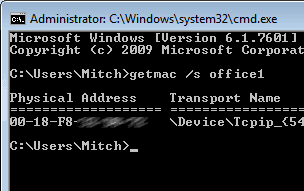
- Find any file command mac mac os x#
- Find any file command mac install#
- Find any file command mac trial#
rg patternįor additional flags and options, review RipGrep’s documentation. The command below will search recursively in the present working directory for any files that match the provided pattern.
Find any file command mac install#
You can install RipGrep from GitHub or through Homebrew. The first point of call for many people is to open Spotlight and look for the file: Press Command-Space to open Spotlight.
Find any file command mac mac os x#
RipGrep aims to offer faster searching options, combining the power of grep with the speed of ack. Use Mac OS X Spotlight search to find missing files. Using RipGrep to Find a Word In a Fileįor most folks in most situations, grep is the best widely-available search tool. ack 'pattern' /path/to/file.txtįor additional flags and options, check out ack’s documentation. If you want to search within a specific file or directory, you can append that file or fully-qualified pathname to your search.

For example, the command below will search within the current directory. Once you have ack installed, you’ll find its pattern matching to be quite simple. If you already have Hombrew installed, you can run the following command to install the most up-to-date version of ack on your Mac. The ack command is likely the fastest searching tool, but it’s not as popular as the above options.Īck does require pre-installation with Homebrew. Using ack to Find a Specific Word In a File

The normal grep flags should be fully operational from within the -exec flag.įor complete review, check out find’s man page. That’s why grep is required to search file text and contents. Note that find only looks at filenames, not contents. With a clever arrangement of syntax, you can use find’s faster file-system search to locate the specific file types you want to search within, then pipe them to grep in order to search inside the files.
Find any file command mac trial#
Download: Find Any File (6, free trial available) 3. This command would use find’s -exec flag to pass the found files to grep for searching. Invoke Find Any File from other apps, like Alfred, Keyboard Maestro, and Popclip, through URL schemes. The path of the file or folder will appear in the terminal. Drag-and-drop a folder or file from the Finder into the terminal window. In the terminal, type the following command, including a space at the end of it: chflags hidden. You can also exclude specified directories by following the format below: grep -exclude-dir= \ First, open a terminal window press Command+Space, type Terminal, and press Enter. The flag can be added immediately after the grep command, like so: grep -exclude=*.csv -Rw '/path/to/search' -e 'pattern' –include=*.txt, on the other hand, will only search within files with the. For example, –exclude=*.csv will not search within any files with the. To speed up grep, you can use the –exclude and –include flags to limit the search to certain types of files. It supports regular expressions by default. The -e flag prefaces the pattern to search for. This means that ‘red’ will match only ‘red’ surrounded by whitespace characters, and not ‘redundant’ or ‘tired’. The -w flag searches for whole word matches. The -R flag sets grep to recursive mode, navigating through all the directories contained within the specified directory. But for most text-based formats, grep can scan the text of the file for the specified pattern. That said, smaller or less powerful Linux boxes might prefer to run a different command, like ack.ĭepending on how the file is encoded, grep may not always be able to look inside. It’s included on the largest number of Linux systems, and is generally identical across distros. Using grep to Find a Word In a Fileīy default, grep searches through the contents of files as well as their file name. Here we will show you how you can find specific word(s) in a file on Linux. However, the most famous GNU search program grep will look inside files with the correct flags. which outputs something like this: 1 username staff 397 1 username staff 16899 1 username staff 9202 Apr 20 12:44 1 username staff 4268 1 username staff 40272 1 username staff 274 1 username staff 3989 Apr 16 22:12 1 username staff 3177 1 username staff 2684 1 username staff 1997 1 username staff 2546 Nov 15 14:47 1 username staff 27695 Nov 23 06:03 1 username staff 7777 1 username staff 413 1 username staff 334 1 username staff 9913 1 username staff 18545 Nov 15 19:44 1 username staff 3702 1 username staff 3266 xmlrpc.By default, most search tools look at file names, not file contents. Then if you want more information, try this: mac:wordpress username$ ls -la *> file-list-full.txt files-all.txt List contents of directory mac:wordpress username$ ls -m1 *> file-list.txt files-recursive.txt Get everything find. List all files, first level folders, and their contents ls * -r List all first-level subdirectories and files file */* Save file list to text file */* *>. now having collected some useful commands, I want to post ‘em for future reference. As I’m not an expert in Terminal, it took awhile to figure out the magic recipe.

From time to time I have occasion to generate a list all WordPress files or similar.


 0 kommentar(er)
0 kommentar(er)
